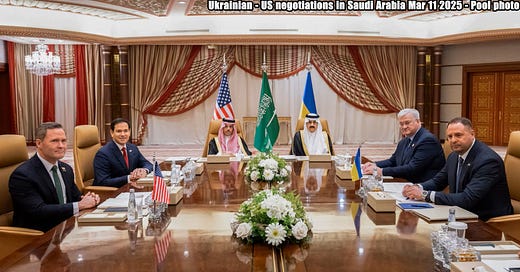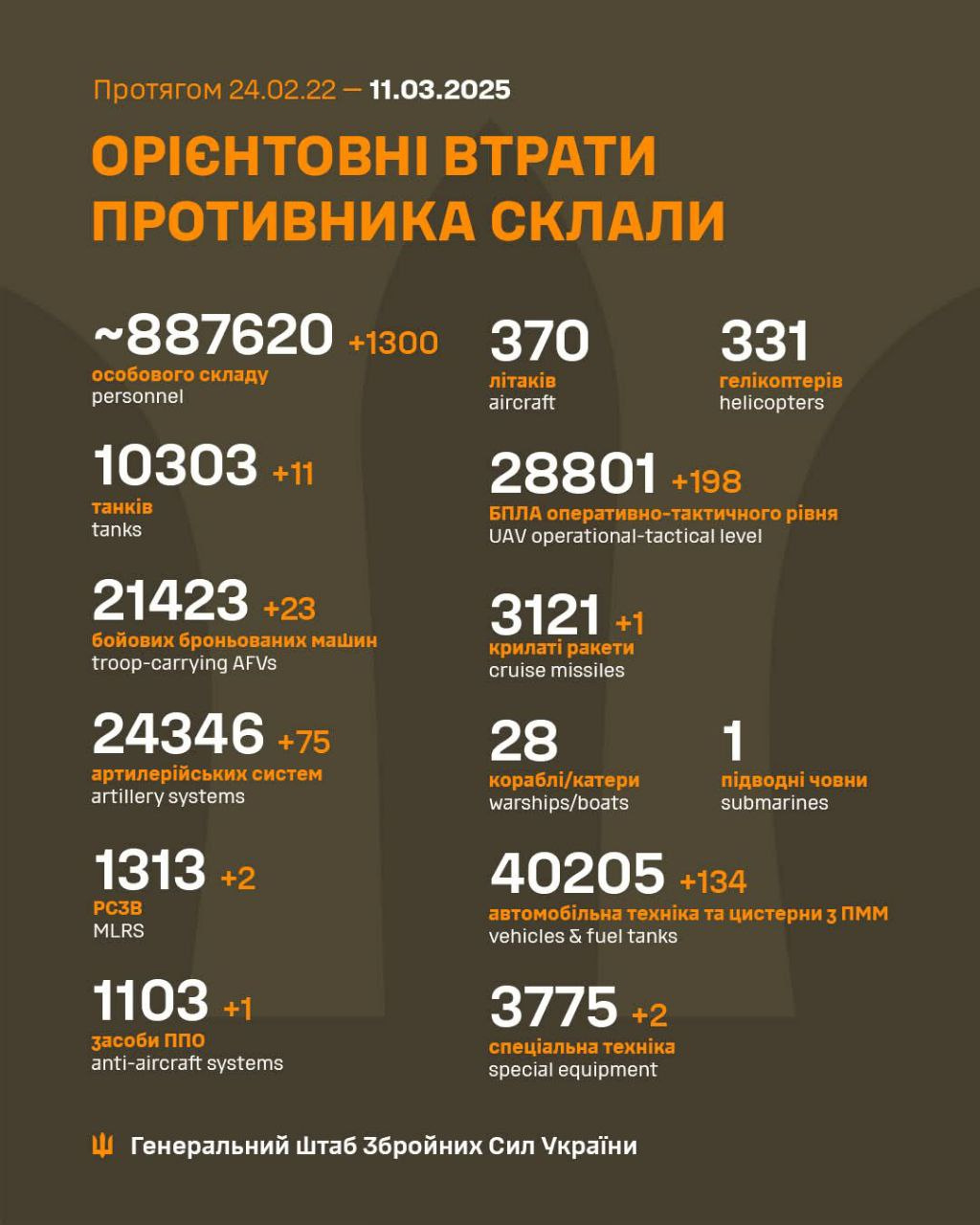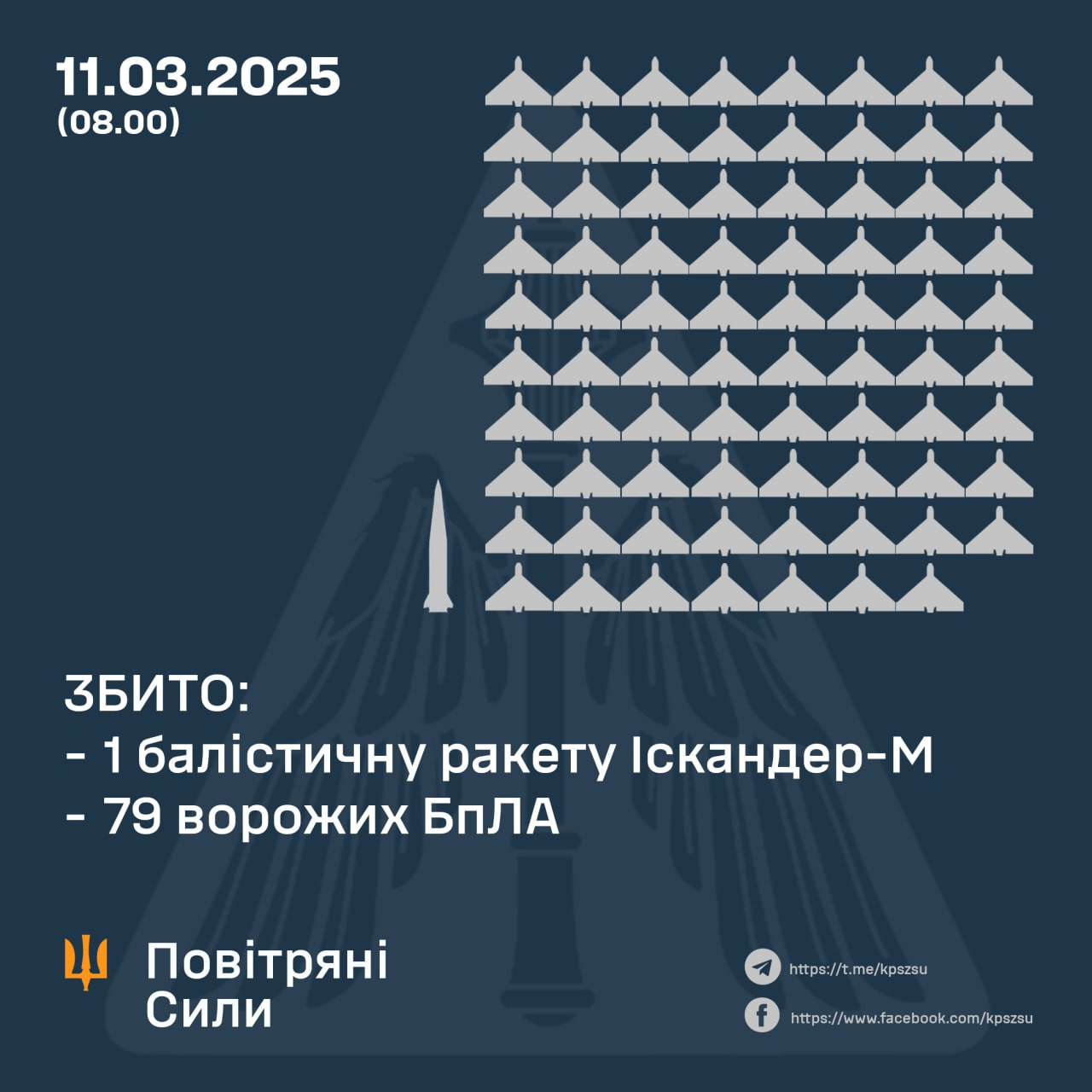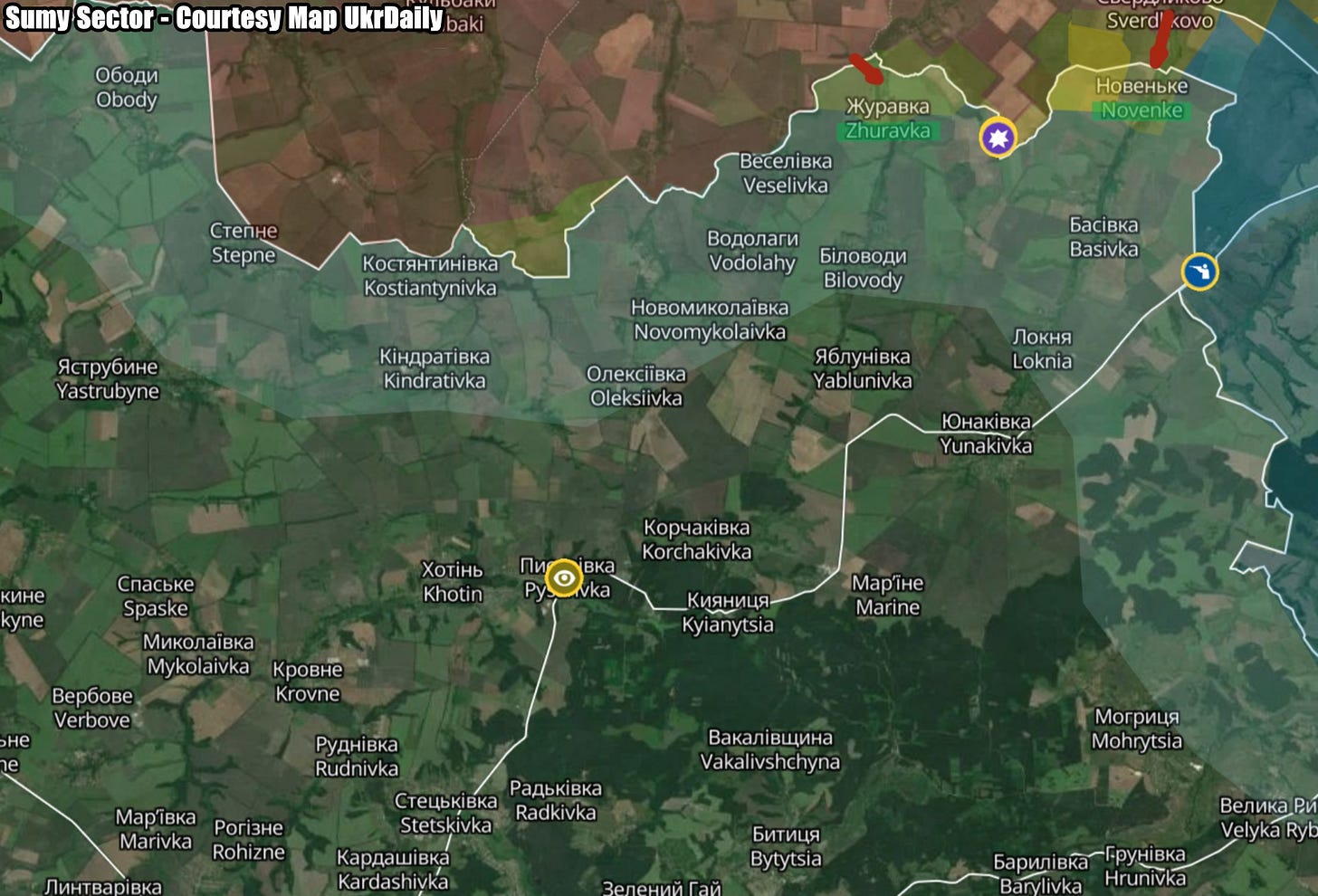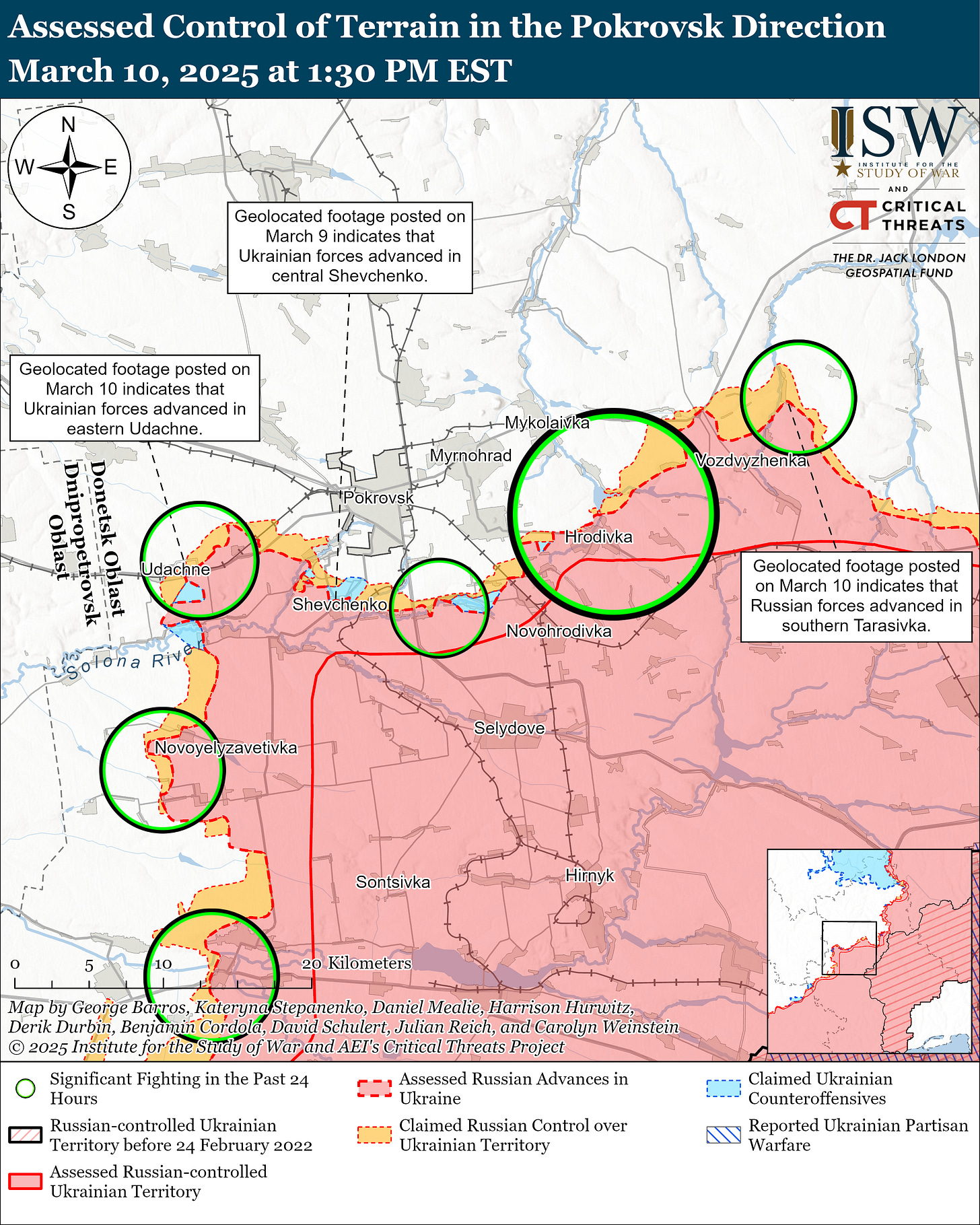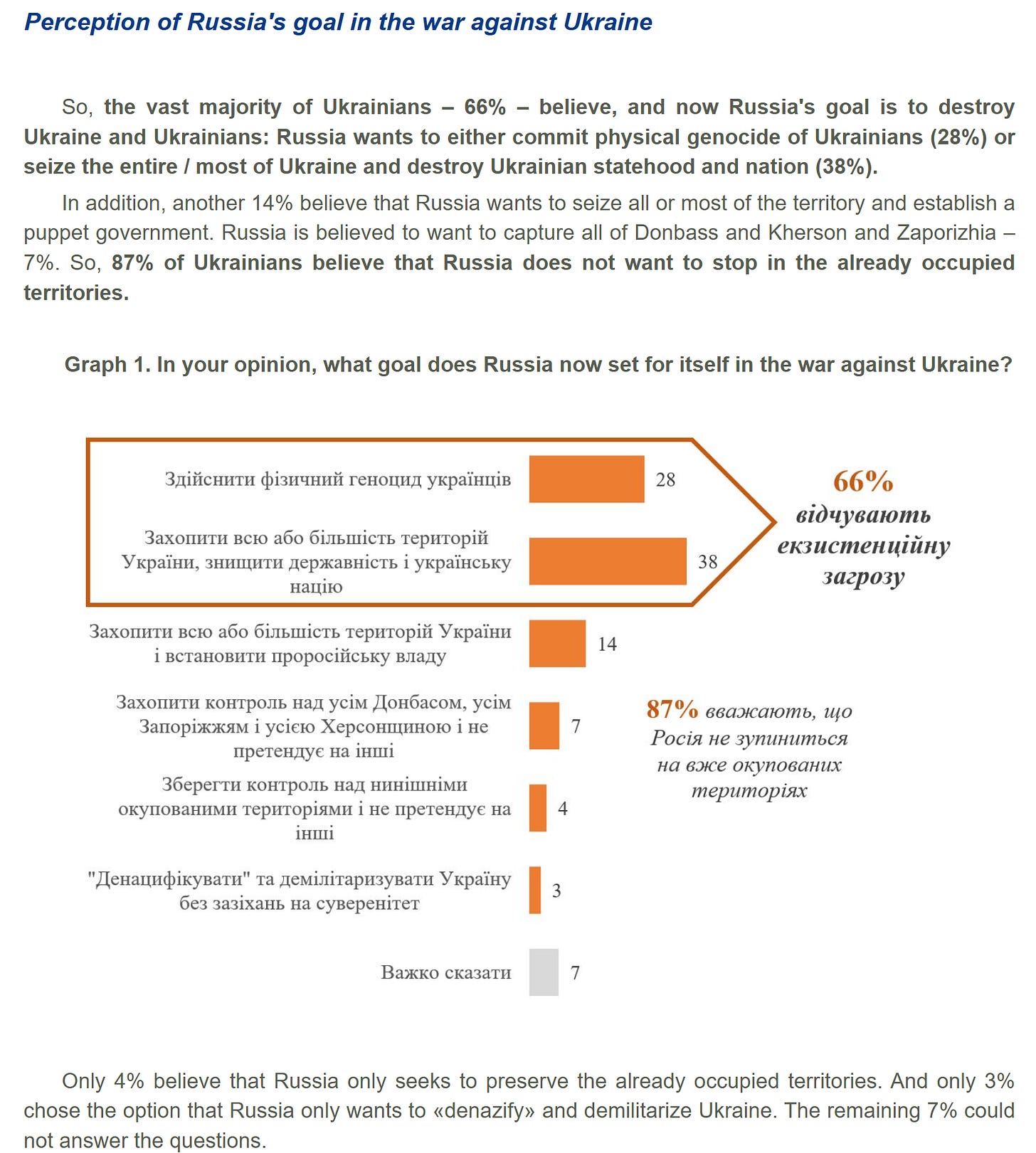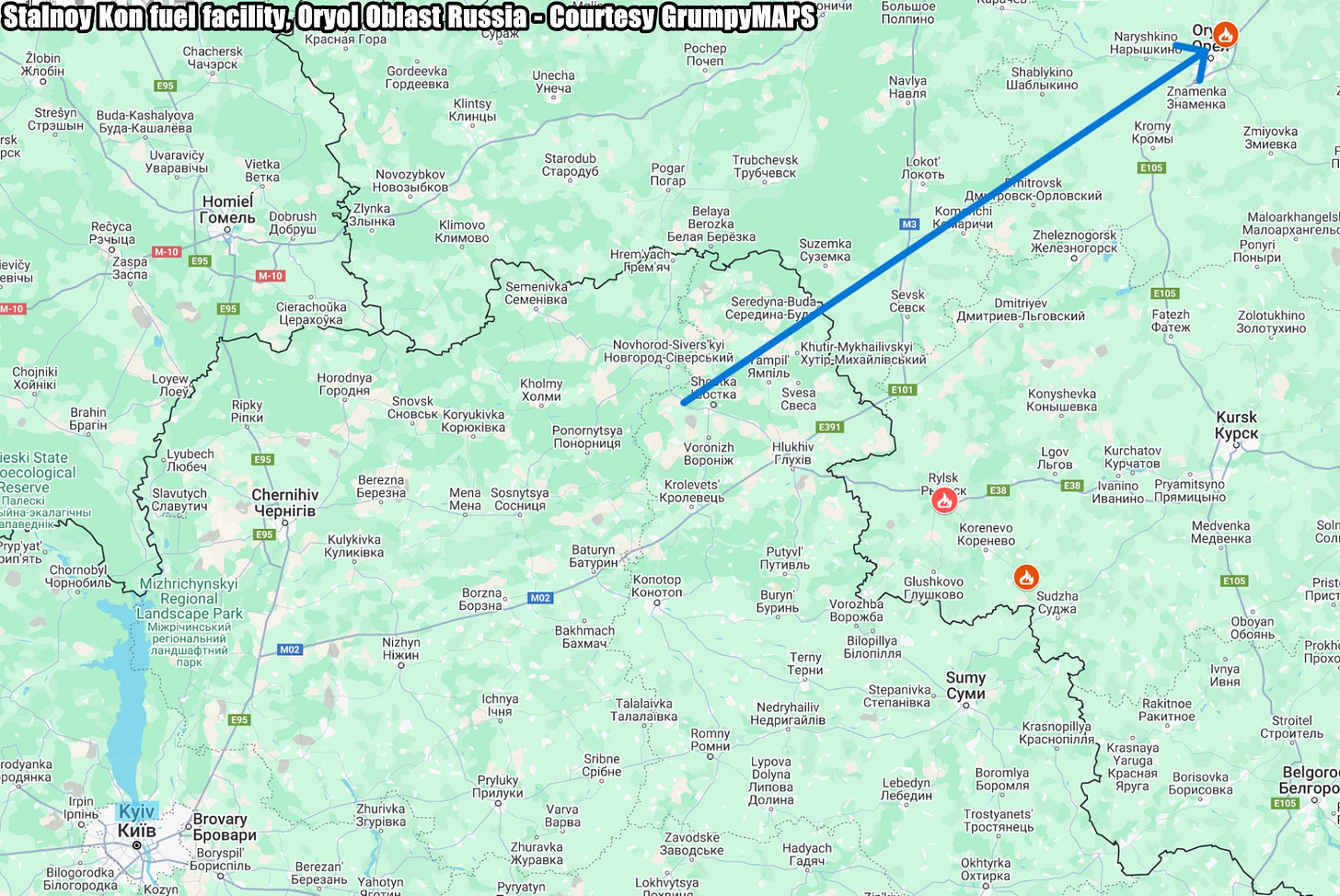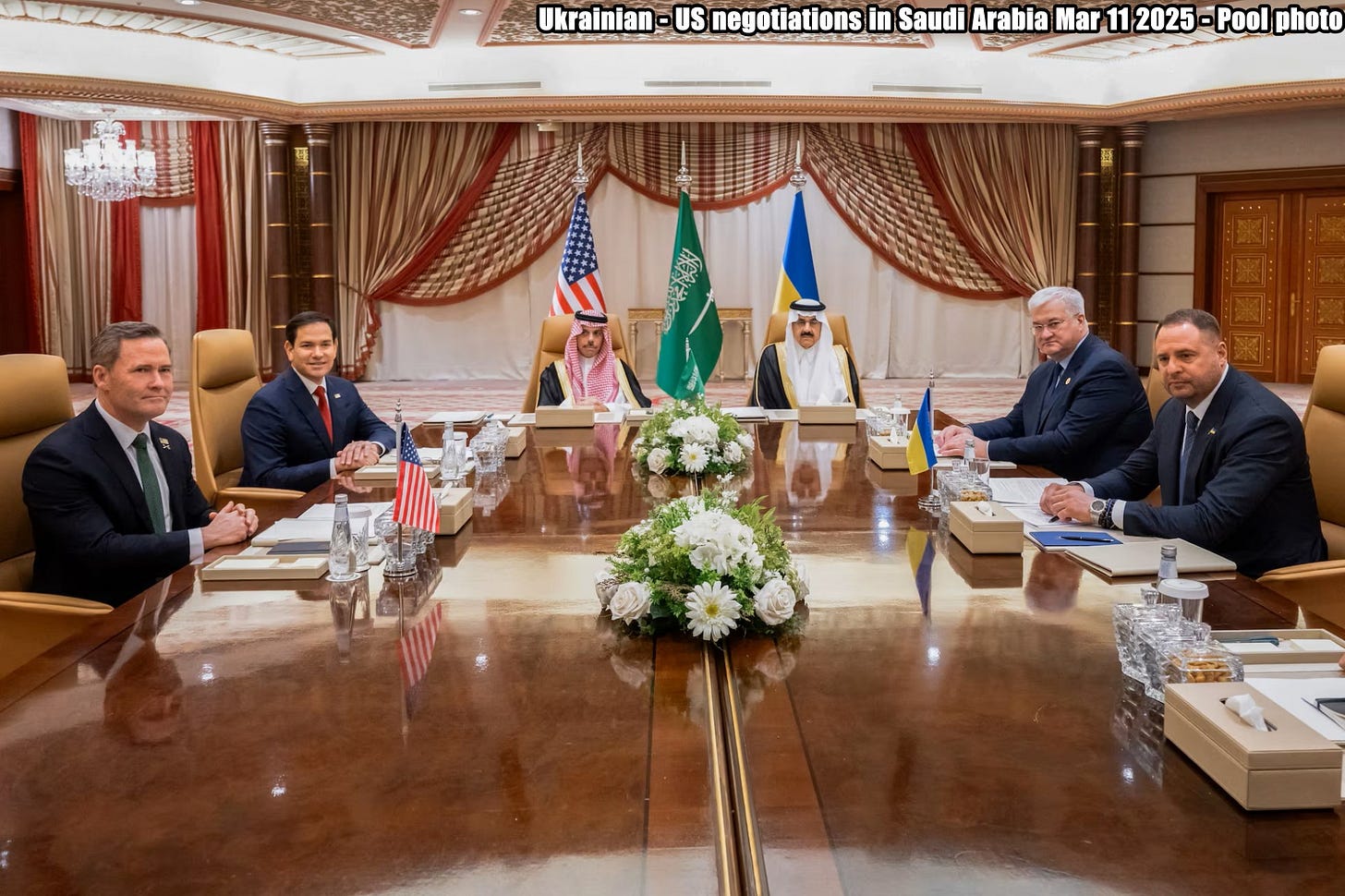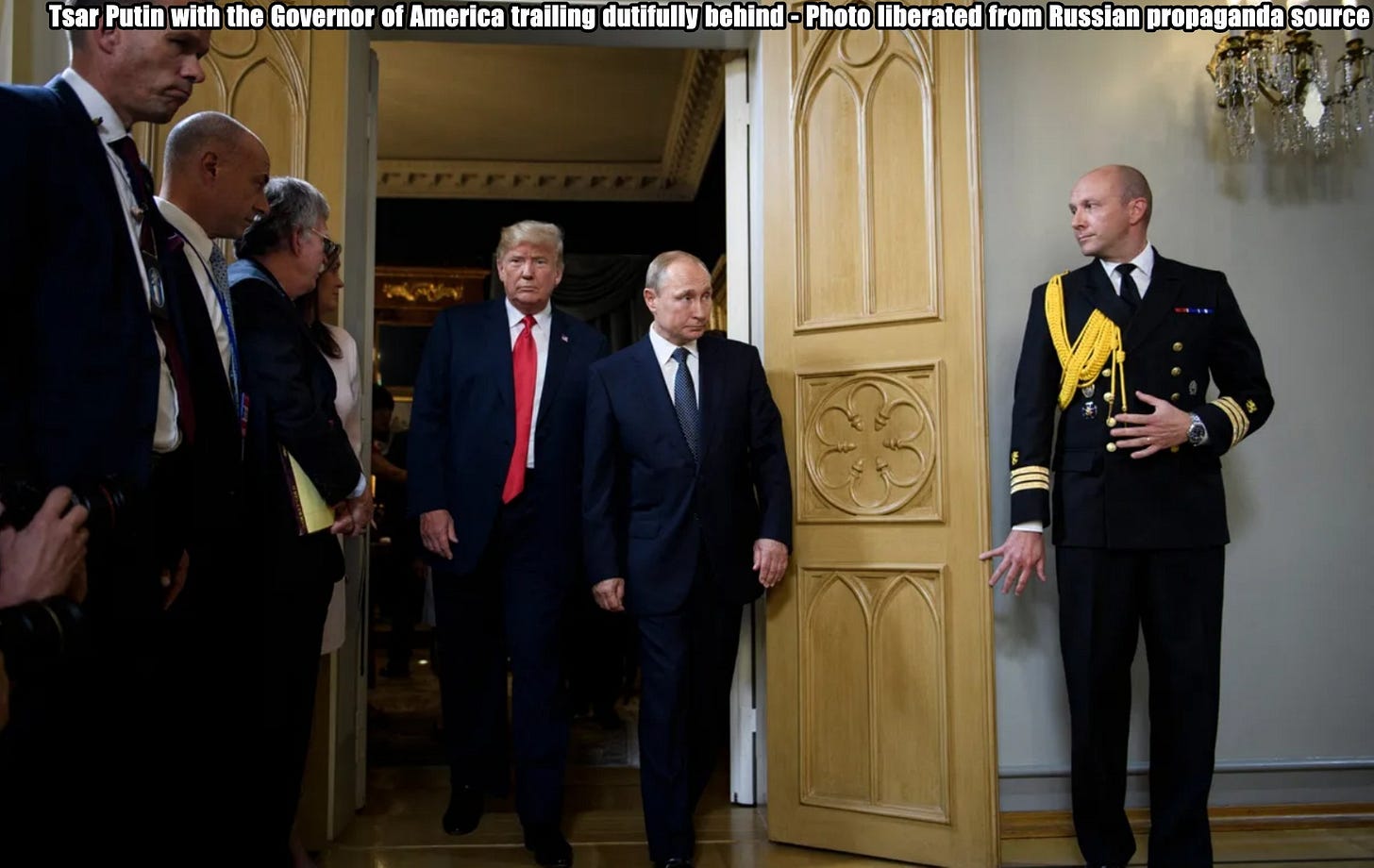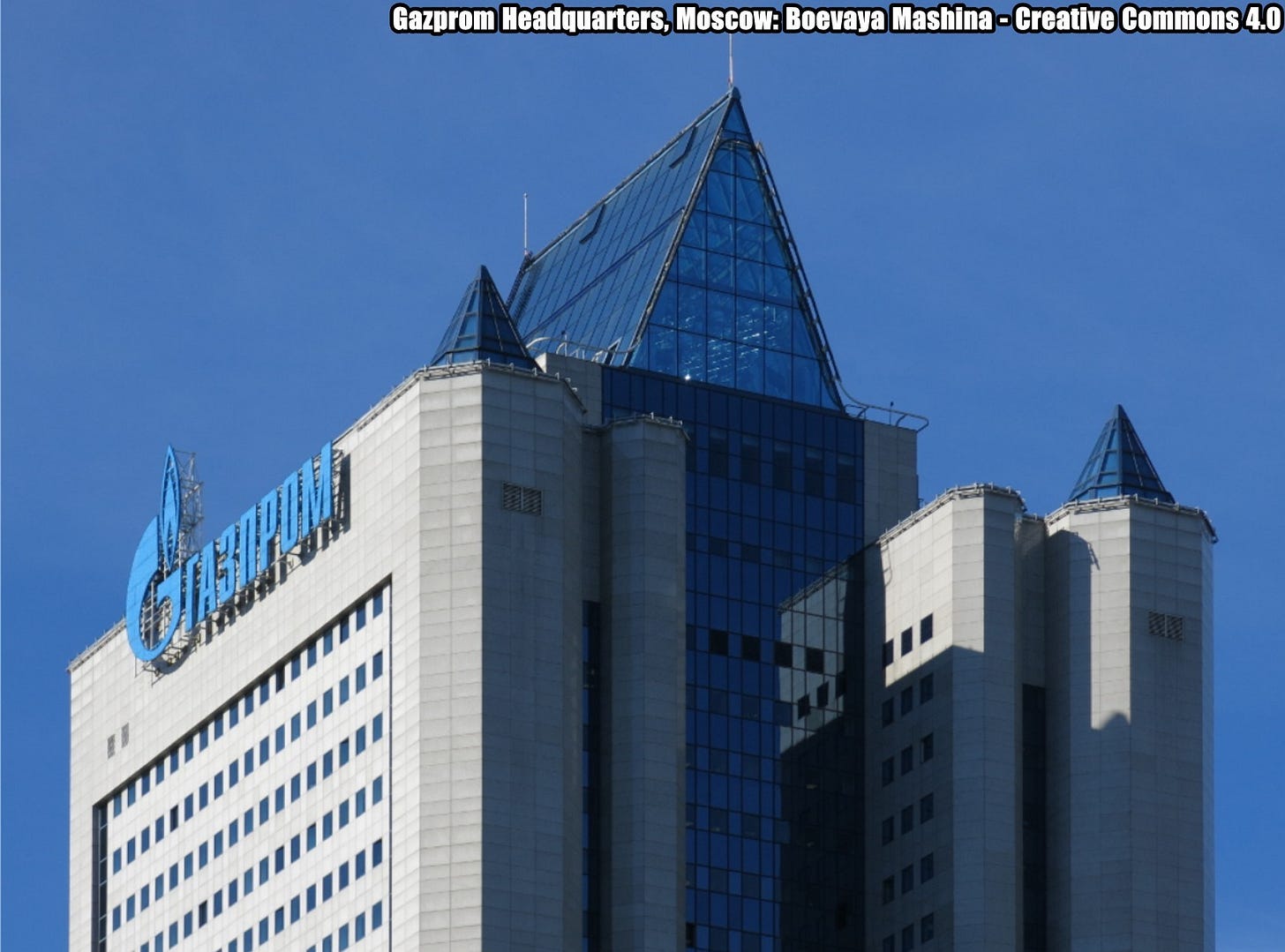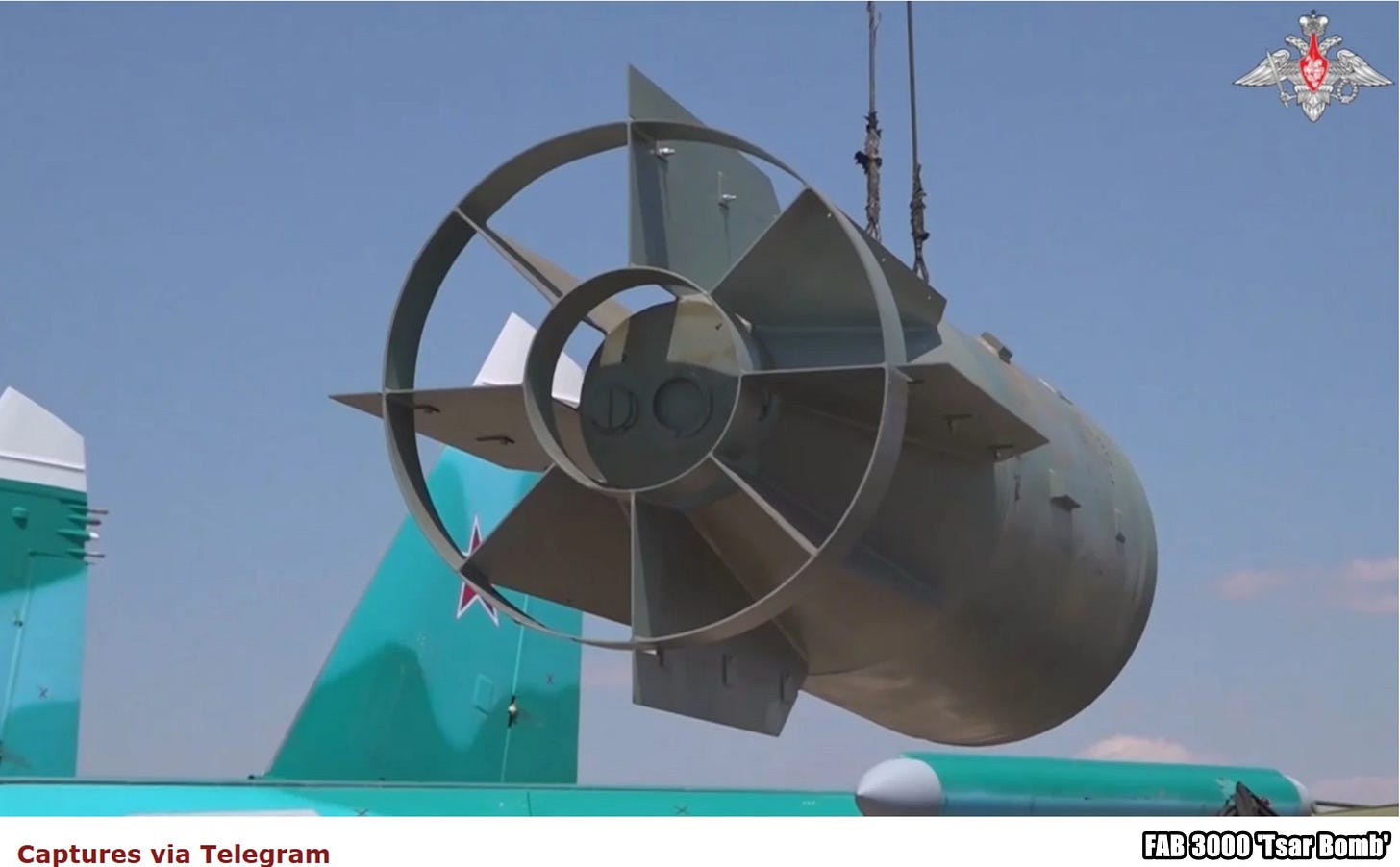Slava Ukraini! In early 2022 I began a Telegram channel aggregating news from a number of sources daily on the war in Ukraine. In June 2023 I began providing a daily draft for the Ukraine War Brief Podcast collecting news from over 70 sources daily, which formed the basis of the script. While the Podcast no longer exists I have continued to make this Brief available for my followers here on Substack for those who wish to keep up with the news from the war.
All the latest news on the Russo-Ukraine War 6 days per week
ALONG THE CONTACT LINE
GSAFU Morning Report
The General Staff of the Armed Forces of Ukraine in its Operational Information update at 08:00 on Mar 11 stated that day 1112 of the full-scale invasion of the Russian Federation against Ukraine had begun.
The situation on the line of combat remains tense in some sectors. Ukrainian defenders continue to actively counteract the Russian aggressor, causing them significant losses in personnel, equipment and technology. Exhausting the enemy along the entire front line and continuing to disrupt the plans of Russian occupiers to advance deeper into the territory of Ukraine.
During the past day, 140 combat engagements took place.
Over the past 24 hours, the enemy carried out 2 missile strikes, 113 air strikes, used 2,930 drones and fired approximately artillery 6,000 shells across the positions of Ukrainian forces and civilians.
Air Force Daily Report
1 BALLISTIC MISSILE AND 79 ENEMY UAVS SHOT DOWN, 35 DRONES FAILED TO REACH THEIR TARGETS (LOCATIONALLY LOST)
➖➖➖➖➖➖➖➖➖
On the night of Mar 11, 2025 (from 19:00 on Mar 10), the enemy attacked with an Iskander-M ballistic missile from the Taganrog region - Russia and 126 Shahed attack UAVs and simulator drones of various types from the directions: Orel, Shatalovo, Millerovo, Kursk, Bryansk, Primorsko-Akhtarsk - Russia.
The air attack was repelled by aviation, anti-aircraft missile troops, electronic warfare units, and mobile fire groups of the Air Force and Defense Forces of Ukraine.
As of 08:00, the shooting down of an Iskander-M ballistic missile and 79 Shahed attack UAVs and drones of other types in Kharkiv, Poltava, Sumy, Chernihiv, Kyiv, Zhytomyr, Vinnytsia, Dnipropetrovsk, Zaporizhia, Odesa and Kherson regions was confirmed.
35 enemy drone simulators were lost in location (without negative consequences).
The Donetsk, Odesa, Kharkiv, Sumy, and Kyiv regions were affected by the Russian attack.
Combat Operations in the Kursk Sector, Russian Federation
The Institute for the Study of War (ISW), a US based think tank, in its Mar 10 Russian Offensive Campaign Assessment reported that Russian forces are consolidating their gains in Kursk Oblast and likely preparing to attack Sudzha in the coming days. Geolocated footage published on Mar 10 indicates that Russian forces advanced in central Martynovka (northeast of Sudzha). Elements of the Russian 44th Army Corps (AC) (Leningrad Military District [LMD]) and the 1434th "Akhmat-Chechnya" Regiment (subordinated to the Russian Ministry of Defense [MoD]) are reportedly attacking near Martynovka.
Elements of the Russian 40th Naval Infantry Brigade (Pacific Fleet), 177th Naval Infantry Regiment (Caspian Flotilla), and the 810th Naval Infantry Brigade (Black Sea Fleet) and up to two battalions of North Korean forces are reportedly attacking south of Sudzha near Kurilovka and Guyevo.
Ukrainian forces are counterattacking along the international border. Ukrainian Commander-in-Chief General Oleksandr Syrskyi stated on Mar 10 that Ukraine is reinforcing its force grouping in Kursk and Sumy oblasts with additional drone and electronic warfare (EW) units and that Ukrainian forces are successfully countering the threat of Russian encirclement in Kursk Oblast and along the international border.
The Khortytsia operational-strategic group
(Responsible for the northeastern part of Ukraine. )
Sumy Sector: Ukrainian State Border Service Spokesperson Andriy Demchenko stated that Ukrainian forces are working to repel Russian attacks in the direction of Novenke and Zhuravka (both northeast of Sumy City) and noted that Russian forces are trying to cut Ukraine's main ground line of communication (GLOC) along the Sumy City-Sudzha H-07 highway. Russian milbloggers claimed that Ukrainian forces are counterattacking near Novenke, Zhuravka, and Basivka (also northeast of Sumy City).
Elements of the Russian 83rd Airborne (VDV) Brigade are operating in Zhuravka. Demchenko stated that Russian forces do not currently have the capacity to conduct a significant cross border operation into other areas of northern Ukraine.
Toretsk Sector: Russian forces recently advanced in the Toretsk direction.
Geolocated footage published on Mar 10 indicates that Russian forces recently advanced along Tobolenka Street in western Toretsk. The Ukrainian General Staff published a map on March 10 indicating that Russian forces recently advanced south of Krymske (north of Toretsk).
The Tavria operational-strategic group
(Responsible for the central-eastern and southeastern part of Ukraine.)
Pokrovsk Sector : Ukrainian and Russian forces recently advanced in the Pokrovsk direction.
Geolocated footage published on March 9 and 10 indicates that Ukrainian forces recently advanced in central Shevchenko (south of Pokrovsk) and in eastern Udachne (southwest of Pokrovsk).
Geolocated footage published on March 10 indicates that Russian forces recently advanced to Moskovska Street in southern Tarasivka (northeast of Pokrovsk). The Ukrainian General Staff published a map on March 10 indicating that Russian forces recently advanced north and northeast of Hrodivka (southeast of Pokrovsk).
The Odesa operational-strategic group
(Responsible for Kherson, Qırım, (also known as Crimea) and the Black Sea.)
There have been no major changes to the combat environment since our last report.
TEMPORARILY OCCUPIED TERRITORIES
Nothing major to report.
THE HOME FRONT
87% of Ukrainians believe Russia will not stop at occupied territories.
A vast majority of Ukrainians believe that Russia is determined to destroy Ukraine and will not stop at the territories it currently occupies, according to a survey by the Kyiv International Institute of Sociology (KIIS) published on Mar 11.
The survey comes as U.S. Secretary of State Marco Rubio said on Mar 10 that Ukraine would need to make territorial concessions as part of any agreement to end the war.
According to KIIS, 87% of Ukrainians believe that Russia intends to continue its aggression beyond the currently occupied territories. This belief is consistent across all regions, with 80% in the east and south and 89-90% in the west and center agreeing that Moscow will not stop at the current front line.
Furthermore, 66% of respondents said that Russia's ultimate goal is Ukraine's destruction — 28% believe Moscow seeks physical genocide, while 38% say it aims to seize most or all of Ukraine's territory and eliminate its statehood and national identity.
A further 14% believe Russia seeks to occupy all or most of Ukraine and install a puppet government, while 7% think Moscow wants to consolidate control over the partially-occupied Donetsk, Luhansk, Kherson, and Zaporizhzhia oblasts.
The findings align with Russian statements, as Russia's Defense Minister Andrei Belousov said on Dec. 16, 2024, that Moscow aims to capture the entirety of the four Ukrainian oblasts in 2025.
Only 4% of respondents believe that Russia aims to maintain control over its existing territorial gains, and just 3% accept Russia's claim that it wants to "denazify" and demilitarize Ukraine. The remaining 7% were undecided.
The survey was conducted between Feb. 14 and Mar 4, with 1,029 respondents aged 18 and older interviewed by telephone across all Ukrainian government-controlled regions.
The survey results come amid growing concerns that U.S. President Donald Trump's push for a swift end to the war could lead to a peace deal on unfavorable terms for Ukraine, potentially leaving it vulnerable to future Russian attacks.
RUSSIAN WORLD
Ukraine launches major drone strike on Moscow.
Ukraine on Tuesday launched its biggest drone attack on Moscow yet, deploying at least 91 drones, killing at least three people, sparking fires, closing airports and forcing dozens of flights to be diverted, Reuters reported citing Russian officials.
The strike - in which Russia claimed 337 drones were downed - appeared aimed at showing Kyiv can also land major blows after a steady stream of Russian missile and drone attacks, one of which killed 14 people on Saturday.
The dawn attack unfurled ahead of talks between U.S. and Ukrainian officials in Saudi Arabia on seeking an end of the three-year-war and as Russian forces try to encircle thousands of Ukrainian soldiers in Kursk.
Meanwhile Ukraines General Staff reported Ukrainian forces successfully attacked the Moscow Oil Refinery and a Druzhba oil pipeline facility in Oryol Oblast overnight on March 11.
The statement comes after Russia claimed to have downed over 330 Ukrainian drones in the Moscow, Oryol, and eight other oblasts in a massive drone strike.
The attack was carried out by Ukraine's Unmanned Systems Forces in cooperation with the Security Service of Ukraine (SBU) and military intelligence (HUR), the General Staff said.
The operation "struck a number of Russian strategic objects, enabling armed aggression against Ukraine," the military said. Ukraine has repeatedly targeted industrial and military facilities in Russia's rear to undermine Moscow's ability to wage its war.
Multiple hits were recorded at the Moscow Oil Refinery, which is capable of processing 11 million metric tons of oil per year and covers 40-50% of Moscow's gasoline and diesel supplies, according to the statement.
Explosions were also reported at the Stalnoy Kon fuel facility in Oryol Oblast. This facility is a key part of the Druzhba oil pipeline infrastructure and ensures oil supplies to the Ust-Luga port in Leningrad Oblast. The facility lies around 170 kilometers (100 miles) from the Russia-Ukraine border.
The strike marks Ukraine's most extensive drone strike against Moscow and Russia throughout the full-scale war.
The Ukrainian military said it has "detailed information about the strategic facilities" enabling Russian aggression and "adheres to the norms of international humanitarian law and takes measures to protect the civilian population as much as possible."
These attacks come as Zelenskyy has been calling on his European allies to support the air and sea truce idea that he says would be a chance to test Moscow's willingness to end the war.
Since President Vladimir Putin ordered the invasion of Ukraine in 2022, the war has showcased the devastating power of relatively cheap drones which have been used by both sides to target cities, troops, oil refineries and airfields.
RELATED INTERNATIONAL NEWS
US and Ukraine hold talks in Saudi Arabia after major drone attack on Russia.
Ukrainian and U.S. officials held crunch talks in Saudi Arabia on Tuesday to find a path towards ending the war with Russia, hours after Kyiv's forces launched their largest drone attack on Moscow to date. Reuters reports.
President Volodymyr Zelenskyy hopes the meeting in Jeddah will revive "pragmatic" U.S. ties after his disastrous talks with U.S. President Donald Trump last month and he has suggested an initial truce with Russia in the air and at sea.
The proposal is aimed at demonstrating he is working towards Trump's objective to end the war at lightning speed, after the U.S. president accused the Ukrainian leader of not being ready for peace and pressed ahead with direct talks with Russia.
"The meeting has begun very constructively," Andriy Yermak, Zelenskiy's chief of staff who is leading the Ukrainian delegation, wrote on Telegram.
Ukraine's anxious European allies are watching for any sign of an improvement, or further deterioration, in Kyiv's relations with Trump's Washington, which has upended U.S. policy on the war and piled pressure on Ukraine.
In particular, the United States has stopped military assistance and paused intelligence sharing with Kyiv, and British Prime Minister Keir Starmer told Trump on Monday that he hoped those moves could be reversed as a result of the talks.
"Dear Americans, dear Ukrainians, don't waste this chance. The whole world is watching you in Jeddah today. Good luck!" Polish Prime Minister Donald Tusk wrote on Twitter.
As the diplomacy plays out, Ukraine's battlefield positions are under heavy pressure, particularly in Russia's Kursk region where Moscow's forces have launched a push to flush out Kyiv's troops, which had been trying to hold a patch of land as a bargaining chip.
Zelenskiy's Oval Office clash with Trump left the signing of a bilateral minerals deal in limbo and Kyiv's bid to obtain security guarantees from Washington adrift.
Trump has framed the deal, which is set to be discussed on Tuesday, as key to continued U.S. support and compensation for many billions of dollars in U.S. military aid to Ukraine since Russia invaded three years ago.
Ahead of the talks, Yermak told reporters that security guarantees remained key for Ukraine, but suggested they might only look at that in a preliminary way on Tuesday.
Trump's special envoy for the Middle East, Steve Witkoff, who has been drafted into Ukraine diplomacy, said he was hopeful the U.S.-Ukraine minerals deal would be signed soon.
Witkoff plans to visit Moscow to meet President Vladimir Putin, a person briefed on the plans said on Monday.
Ukraine's European allies argue that Ukraine can only negotiate a peace deal with Russia from a position of strength and Kyiv should not be rushed to the bargaining table with an aggressor.
Zelenskyy has said that Putin does not want peace and warned that Russia could attack other European countries if its invasion of Ukraine does not result in a clear defeat.
Rubio declined on Monday to specify concessions each side would have to make but said Kyiv would have difficulty reclaiming all of its lost territory.
"The Russians can't conquer all of Ukraine, and obviously it'll be very difficult for Ukraine in any reasonable time period to sort of force the Russians back all the way to where they were in 2014," he told reporters.
U.S. and Russian officials met in the Saudi capital in February in a rare encounter between the former Cold War foes. The discussions were focused largely on restoring ties after a near-total freeze on official contact under former U.S. President Joe Biden, Trump's predecessor.
Western Officials Say Putin Knows His Ukraine Terms Won’t Be Met
Western security officials said Russian President Vladimir Putin has no intention to compromise on demands on land, peacekeepers and Ukraine’s neutrality in any peace talks, complicating President Donald Trump’s efforts to secure a credible settlement, Bloomberg reports.
Putin has made deliberately “maximalist” demands ahead of negotiations to end the war, which he knows will likely be unacceptable to Ukrainians and other Europeans, according to the security officials. The Russian leader is prepared to continue fighting if he doesn’t get his goals, said the officials, who asked not to be named discussing matters that haven’t been made public.
The assessment of Putin’s intent casts doubt on whether he is serious about negotiating a realistic and lasting peace settlement with Ukraine. It also clashes with Trump’s views shared at the White House on Friday, when he told reporters he believed Putin wanted peace. “I’m finding it more difficult, frankly, to deal with Ukraine,” Trump said.
Kremlin spokesman Dmitry Peskov said the security officials’ characterization of Russia’s position “is not true,” saying Ukraine needed to take steps to allow negotiations. “Russia is open for peace efforts, for peace settlement around Ukraine, and we actually prefer to reach our goals through peaceful and diplomatic means,” Peskov said, adding, “if today and tomorrow shows that Ukraine is ready for negotiations, it will be a different story.”.
US Secretary of State Marco Rubio, who arrived in Saudi Arabia on Monday, characterized the talks with Ukraine as an effort to get a sense of what concessions they’re willing to make before finding out Russia’s position. Trump envoy Steve Witkoff is separately headed to Moscow to meet Putin this week, according to people familiar with the matter, in what would be his second such trip.
Bloomberg reported last week that Russia has expressed a willingness to discuss a temporary truce with conditions, such as determining the makeup of any peacekeeping force. Russia’s long-held demands include a Ukrainian commitment to neutrality, international recognition of Moscow’s claim to annexed land and opposition to European peacekeepers.
Those goals run counter to the conditions of a “just and lasting peace” as outlined by US allies including UK Prime Minister Keir Starmer and French President Emmanuel Macron. They have been attempting to assemble a “coalition of the willing” to secure any truce.
The Western security officials’ assessment suggests Putin sees little incentive to back off the hard-line positions that have long shaped his country’s approach to Ukraine despite Trump’s promise to bring the conflict to an end. The risk is that Zelenskiy is blamed for not accepting any deal that imposes such terms and fights on, backed by European neighbors.
That would speed up a broader rift in the North Atlantic Treaty Organization, already under strain from Trump’s overtures to Putin and demands for Europe to take greater responsibility for regional security. There are signs that Russia is succeeding in its goal of dividing NATO, with European leaders publicly questioning American commitment in the region and fast-tracking plans to increase defense spending.
Trump has said he wants a swift end to the fighting since announcing he was beginning talks with Russia to end the war last month. The president has suggested he believes Ukraine may regain some of its land that’s been occupied by Russia, and also claimed Putin is ready to accept European peacekeepers being stationed in the country.
In remarks to Russian diplomats in June, Putin indicated that he would require international recognition of Moscow’s claims to annexed Ukrainian land, which includes territory not currently controlled by his troops. He has said since the start of the invasion that he wanted the “demilitarization” of Ukraine, implying he would seek limits on its own army.
That’s likely to be another point of disagreement, since an adequately manned and equipped military is crucial to guaranteeing Ukraine’s security, several European officials said.
Putin has insisted that Ukraine formally commits to neutrality and abandons its bid for NATO membership. Russia has also recently revived the idea of rolling NATO back to its 1997 membership — before Poland, Romania and several other Eastern European nations joined — in a sign that Trump’s approach has emboldened the Kremlin.
Last week, Russian Foreign Minister Sergei Lavrov said Moscow “categorically” opposed any deal that allowed European troops to act as peacekeepers in Ukraine. “We see no room for compromise,” Lavrov told reporters in Moscow.
Russia's Gazprom faces almost $20 billion in lawsuits from European energy firms.
European energy firms have filed lawsuits against Russian energy giant Gazprom totaling 18 billion euros ($19.6 billion) over gas supply cuts, the Kyiv Independent reported citing the Moscow Times.
The claims stem from Gazprom's decision to drastically reduce gas deliveries to Europe in 2022 after Russian President Vladimir Putin demanded that payments be made in rubles.
When European customers refused, Gazprom significantly cut supplies, including through the Nord Stream pipeline.
The total amount of claims against Gazprom is nearly equal to its net revenues from gas exports, which include $10 billion from sales to Europe and Turkey, $7 billion from China, and $2 billion from Central Asia and the Commonwealth of Independent States (CIS).
The largest lawsuit was filed by German energy company Uniper, formerly Gazprom's biggest client in Germany and a co-investor in the Nord Stream 2 project.
The company imported 20 billion cubic meters of Russian gas annually and is seeking 14.3 billion euros ($15.5 billion) in damages over losses incurred after Russian supplies were halted.
Gazprom has responded with counterclaims in Russian courts, seeking to block legal proceedings outside Russia.
The Financial Times reported on March 2 that Matthias Warnig, a former Stasi officer and longtime ally of Putin, has been lobbying the U.S. to support a potential restart of the Nord Stream 2 pipeline.
The pipeline, which was co-financed by five European energy firms, was severely damaged in an apparent sabotage attack in September 2022.
MILITARY & TECH
Russia uses ‘Tsar Bomb’ for high-impact strike inside Russia on alleged Ukrainian position
Russia has carried out a devastating airstrike using a FAB-3000 bomb, one of the most powerful conventional explosives in its arsenal, on an area near Sudzha, Kursk region, Defence Blog reports.
The explosion, reportedly targeting an ammonium nitrate plant where Ukrainian troops may have been present, sent a massive shockwave across the region.
According to reports, the blast was so intense that its plume resembled the aftermath of a tactical nuclear explosion.
Since early 2024, Russia has been deploying a wide range of modified aerial bombs, including the FAB-500 and FAB-1500, in its efforts to destroy Ukrainian military positions and infrastructure. Unlike precision-guided Western munitions such as the U.S.-made JDAM, Russia’s guided bomb kits remain less accurate, often hitting within a 30 to 50-meter radius. However, their sheer destructive power has proven effective in leveling urban areas and fortified positions.
In recent months, Russian state media has showcased increased production of these bombs, with reports indicating a doubling of FAB-1500 manufacturing and the revival of the Soviet-era FAB-3000 project. The FAB-3000, carrying approximately 1,400 kg of explosives, was initially used by the Soviet military in Afghanistan during the 1980s but was later phased out due to its indiscriminate destructive nature.
Russian military analysts have referred to the FAB-3000 as a “tsar bomb” due to its enormous impact radius. The weapon’s core blast zone is estimated at 35 meters, with heavy concussive and structural damage extending up to 150 meters. However, its effectiveness against well-fortified positions remains uncertain.
Ukrainian forces have yet to confirm the full extent of the damage or whether military personnel were stationed at the targeted site. The attack raises concerns over the continued escalation of Russia’s air campaign and its impact on the battlefield dynamics.
That’s it for today’s Brief folks if you would like to keep up with events in Ukraine daily please consider subscribing, it’s free!


